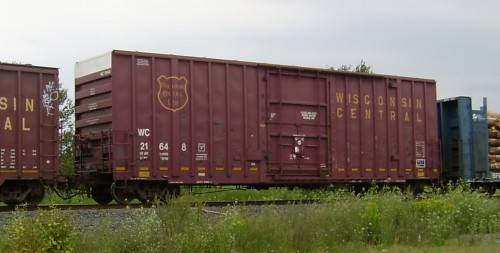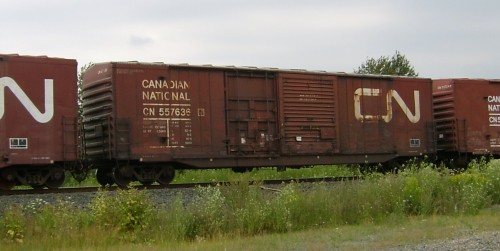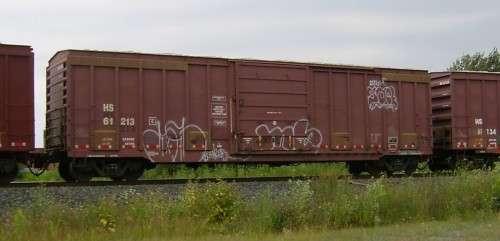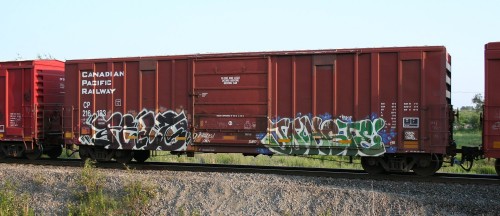Not to be confused with raw products like pulpwood logs or woodchips, wood pulp is a semi-processed intermediate step in the paper production. While some paper mills, like the Abitibi (later St. Marys) paper mill in Sault Ste. Marie are integrated mills covering the entire paper-making process from logs to pulp to finished paper, some mills are only pulp mills, producing market pulp which is sold to other mills for turning into other finished paper products.
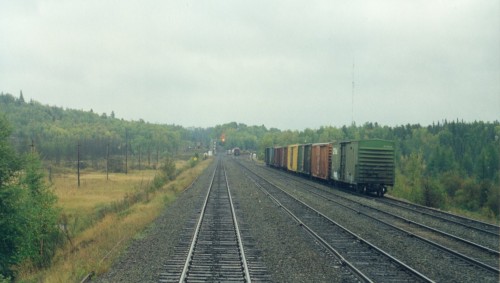
Boxcars in the transfer track at Franz will likely be in wood pulp service. Late 1990s, WRMRC collection.
While there weren’t any pulp mills on the Algoma Central, this was a very common form of bridge traffic from pulp mills on along the north shore of Lake Superior served by Canadian Pacific at Marathon, Terrace Bay and/or Red Rock to finishing mills in Michigan and Wisconsin. Some pulp may have also been delivered to the mill in Sault Ste. Marie, but I believe most of this traffic actually crossed the border into Michigan.
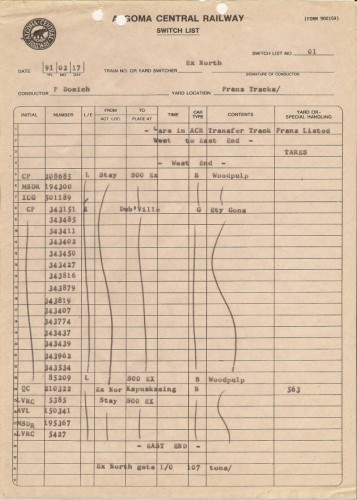
Switchlist at Franz showing several loads of woodpulp, mostly bound for export via Sault Ste. Marie; note one car for Kapuskasing to be lifted by northbound train to Hearst. c1991
This switchlist at Franz also shows that at least some of this traffic went north to mills east of Hearst on the Canadian National (now Ontario Northland) as well. The switchlist shows one car of woodpulp being forwarded to the Spruce Falls Power & Paper mill at Kapuskasing, which produced newsprint.
Wood pulp continues to be an important source of bridge traffic on the former ACR. My recent visits have resulted in spotting quite a number of pulp service boxcars owned or leased by CP on the ACR: at Sault Ste. Marie arriving in the daily freight train from Michigan, at Hawk Junction in the regular CN freight, and in the siding and transfer tracks at Franz (as seen from my ride on the Tour of the Line in 2013).

Modern example of a CP wood pulp service boxcar at Hawk Junction, July 2013. Plates at top and bottom of car are covers for vents, common on modern cars assigned to pulp service. My photo.

